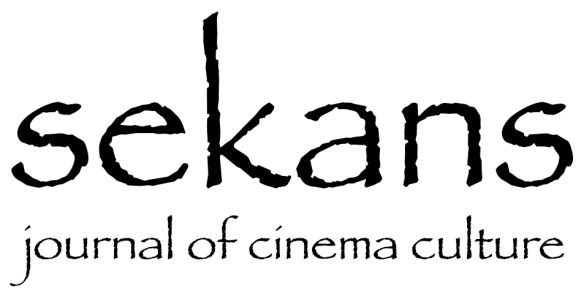THE REMARKABLE ASPECT OF POLICE, ADJECTIVE
Cem Kayalıgil
Police, Adjective (Polițist, adjectiv)
Director and Screenwriter: Corneliu Porumboiu
Cinematographer: Marius Panduru
Editor: Roxana Szel
Cast: Dragos Bucur, Vlad Ivonov, Ion Stoica, Irina Saulescu
2009 / 113’ / Romania
Mark these words before we start: Police, Adjective directed by Porumboiu (b. 1975), who belongs to the minimalist branch of the recent Romanian realist cinema (a.k.a “the Romanian new wave”), does not offer a peculiar aesthetic. Let’s italicize: I am saying peculiar, not authentic, so neither originality nor novelty or uniqueness is of my concern here. To put briefly and roughly, I would like to note that the film asserts “I belong to the recent wave of realist Romanian film!”, and it attaches too much importance to put this forth that the aesthetic coherence of the film is built around this concern. Police seems to be focused on meeting the expectations and demands towards the Romanian directors, especially after the critics’ and the audience’s appreciation, embracement and the awarding of films such as The Death of Mr. Lăzărescu (Moartea domnului Lăzărescu, 2005) by Puiu, 12:08 East of Bucharest (A fost sau n-a fost?, 2006) by Porumboiu and 4 Months, 3 Weeks, 2 Days (4 luni, 3 săptămâni şi 2 zile, 2007) by Mungiu. The film manages to meet the expectations in the formal aspect, but fails in taking it further. It seems as if this film was shot so as to make the audience who are aware of the conventions of this cinema say “This cinema has these conventions”; bestowing its existence to the Romanian realist cinema. Ultimately it can be concluded that the film has the potential to conduce to better formal evaluations of the other more important realistic Romanian films. It features such a heuristic value in itself. And I think this is remarkable, especially for the audience who peculiarly concern themselves with the problematics of representation, conveyance, and reconstruction of reality through films.
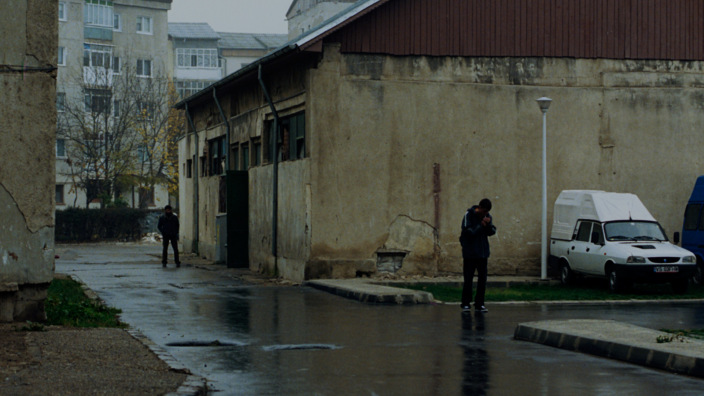
However, for the sake of my argument, let’s first see in which aspects Police, Adjective is unremarkable. The plot of the film is based on a moral conflict. The mission given to our main character, Officer Cristi, is to tail a high school boy who is thought to be a marijuana supplier, and catch him in the act. As we understand, in his first week of the investigation, Cristi did not see the boy selling marijuana or find any relevant evidence. The only thing revealed is that the boy smokes marijuana with his two friends – a boy snitching for the police, and a girl - and for Cristi, this is not a reason for undertaking an operation. Moreover, Cristi thinks that in a few years marijuana will be legalized in Romania as well (just like in the other European countries), thus “ruining” a young boy’s life is wrong. Cristi’s conscience leads him to evaluate taking action with the swiftness expected by his commander and the prosecutor as a “blind rush”. In order not to suffer from the pressure of his conscience, he extends the scope and the duration of the investigation, focuses on the snitch and the girl instead of the suspected boy. Although he avoids his commander until he finds new evidence, eventually, on the 8th day of the narrative (on the second day of the plot, in the 65th minute of the film), he gets rebuked on the phone. There is nothing to do but entering that office; he undergoes the conceptual torture from his commander in this climax lasting almost 20 minutes. He is confronted with the dictionary meaning of “conscience”, “pangs of conscience”, “laws”, “morals” and “police”. And of course, this scene reminds us that unforgettably long studio shot in the director’s hit film 12:08 East of Bucharest.[1] However, the absurd character of the scene here does not come into being in a process as cynical as the one we find in East of Bucharest. For Police purposefully lacks the interaction and the debate–no matter how petty it is– between the characters of the previous film. Instead, in Police, there is the authority of the commander and his dictionary on Cristi, which pressures the protagonist, shuts him up and forces him to be the man of the system.
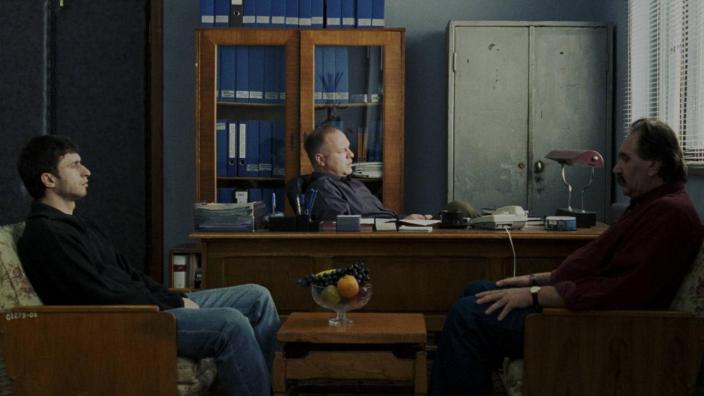
Let’s not be surprised that the winner is this authority at the end of the day, for we know that this is how things work: No matter how Cristi comes out against it, the operation will go for sure. But far more importantly, Police is not a character-oriented moral motivation film, like The Lives of Others (Das Leben Der Anderen, 2006). The cinematographic features of Police that I am addressing below are the reasons why it does not have such a narrative structure. As the audience, we do not even see the moral dilemma of Cristi: There is the Cristi saying no to the operation, there is the other (transformed) Cristi who is planning a detailed operation, and between these two there is a Cristi playing futnet with his colleagues! This off-the-track futnet scene gains significance, when the audience realizes the element it leaves out. There we see a transforming Cristi, and, in line with the aesthetic coherence of the film, I think the reason why he is kept out of the range of the audience is as follows: Police is not a film which conveys a remarkable message about the conflict between the individual morals and the legislation with its sanctions, nor leaves such traces on the audience.
Director Porumboiu aspires to something else in his film, and in a few words we can name it as “witnessing the daily eventlessness”. The film frequently makes us question why we watch or see the things it shows. The most ordinary examples of this are the shots which take almost all of the screen time until Cristi enters the building he works at and goes to his or someone else’s room, or until he covers the distance of all the outdoor space being framed. And probably one of the two catchiest examples is the scene where we watch Cristi slurping his soup at lunch in his own kitchen (the camera is set facing him on the table, ca. 70-second-long single static shot) and the other is where Cristi goes to the living room after having his dinner in the same kitchen (following the 4-minute-long shot of the section of the kitchen where we watch Cristi from the side-view - even if we turn our eyes away, we do not lose the track of the film), sitting next to his wife (a small angled pan, after which the new static frame is described by the frame of living room’s door) teasing her about the “nonsensical” lyrics of the lightweight song she’s been playing on the computer the whole time.[2]

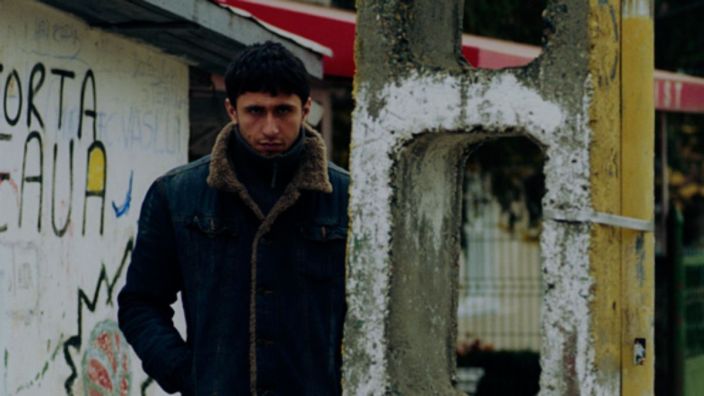
Under these examples, put what you see in (1) the shots displaying the dialogue in the aforementioned 20-minute-long climax (particularly prolonged for the absurdity effect), (2) the pan-intensive follow shots in Cristi’s tailing scenes, and (3) the long scenes where we watch Cristi waiting and spying out for some things to happen: There you have a very good deal of the film’s aesthetic expressivity. Look, what I’m saying is quite plain: This is Porumboiu’s film, Police is all about that, nothing more, for there is nothing else than that.
It is known that some films involve an invitation to aesthetically experience beyond of what is directly shown as that watched on the screen. They may require to be understood through what they don’t show but allude to. I intentionally leave open to discussion what I mean by this cool ‘out of blue’ sentence, and I claim that Police is situated on the opposite of what’s understood by that . So what I refer by saying “Police is all about that” is just this: The shown phenomenon and the experience of seeing it; plus, relevantly, the unshown fact and the experience of not having seen it. So let’s expand on this by going over our basic cinematography knowledge.
A panning camera allows the frame to move on an arc where the tripod functions as a pivot. Seeing an object entering the frame from the left because of the panning to left , we can infer that this object was there, out of the frame but in the world of the film, for some time: “We didn’t see this before.. Oh, I see now- it was on the left.” The fact that the object was there before it is being shown by the panning is a cinematic phenomenon which is not shown at that moment. The expression “I see - it was on the left.” depends on a causal inference (not causal perception). So, the camera movements with their function for inference on these off-screen phenomena and the mise-en-scenes play a key role in Police’s aesthetic expressivity. In his article examining the establishment of realism in the film, Guido Kirsten uses the scene at about the 17th minute as an example for this.[3] In this scene, the static camera at the standard-height with a long focus lens shows us the three youngsters smoking marijuana from a distance. Between our sight and them, there is a wire fence in the mid-distance, and closer to our sight, we see the heads of some kids playing. The framing at such distance -where we have a not-so-clear view of the youngsters’ actions- gives us the feeling of spying on them, and evidently, we assume that we see them from Cristi’s viewpoint.

However, as the camera pans to the left and shows us the other parts of the school area, Cristi enters the frame from the left: We didn’t see him previously, so he’s been to our left, so ours comes to be not his viewpoint. This time, we watch Cristi from a similar distance for a while. Guido Kirsten draws this conclusion: The film enables us, too, to experience this spying action, and his bigger claim is that, with this and similar techniques, the film as a whole draws us directly into the ordinary, daily and the real life of a policeman. [4] Moreover, the technique of showing/not-showing (which characterizes the form of the film) is applied not only through the pan movements: Sometimes, while Cristi is or was in fact located within the shown area, he is still invisible as something gets between the camera (the eye of the audience) and himself, hiding from the people he spies on, if not from us; then he comes out in due course, much to our surprise. Or, in my favorite scene from the technical aspect, we are shown the youngsters smoking marijuana (from a proper distance as always); it is cut (by a discontinuous pan to the left, the intermediary arc movement of the camera has been cut out) where we see Cristi spying on them from a certain distance. We watch Cristi: He stands out in the open, then rushes to hide in the entrance of the building behind him, cranes out, and pulls away to hide himself again; then goes back at a trot in the direction of the place he was standing moments ago , continuously checking out the outer parts of the frame. The panning camera follows Cristi till the spot where the three youngsters were standing but now left vacant– the panning is to the right, traversing the full arc excluded earlier. Cristi bends over and takes the cigarette butt the youngsters threw on the ground. So, we are not shown the youngsters’ finishing their smoking and leaving the area; happening off-screen, they are suggested indirectly through Cristi’s movements: Such an economic and effective mise-en-scene.
My point is that Police concerns itself with the inference to the off-screen facts from the shown ones. And let me highlight that these inferences are the simple and quick ones without requiring long ponderings within a single scene. Considering the fact that there is almost nothing to narrate throughout the film, we can say that these formalistic choices bring out the audience’s state of witnessing to the moment and the space in that moment. However, we can also easily notice that the filmed moments and spaces, too, are featureless. So, our witnessing is important not because of the features of the objects presented to our witnessing (the frame’s temporal and spatial content, everything that the frame contains). If Police does not turn into a police documentary while bearing a claim for an explicit and minimalistic realism, it is because of this straightforward featureless-ness. Let’s add that Police does not problematize the state of witnessing, either; this is not a Hanekesque film – we do note that, too. But if it’s so, does our witnessing bear any worth at all, other than being aestheticized?
Well, I think there is: It has an attributional and (self-)referential importance. I am now going back to what I have said at the beginning. There is a world offered in the recent Romanian realist cinema. This is a world of ordinary (even insipidly ordinary) characters who rarely catch each other’s eyes or affiliate with each other, and a world where the access to these characters inner worlds is not granted to the audience. This is also a world of filmic spaces that are left featureless, because we cannot call them beautiful or ugly, or because, even if they are ugly in “reality”, their ugliness is nothing of cinematic concern. This is an a posteriori world brought into existence by the cinematic conventions of the internationally renowned Romanian directors of the 2000’s, and it is this very world that Police presents us to witness. There have been many historical and also film-historical reasons and advantages for these directors to create such a world. In my opinion, to have a meaningful and mind-triggering watching of Police, it is crucial to be cognizant of this world and these conditions of aesthetic creation. Porumboiu’s remarkable success in his film is his ability to wrap the obligation to refer to the world he shares with his peers’ films (the world that creates his director identity, too) in the aestheticization of cinematic witnessing. In other words, his ability to justify the film’s non-peculiar, derivative aesthetics through the witnessing experience that is intrinsically object-dependent and attributional.
The films that enrich the experience of watching other films are good as well. I am not going to say that Police, Adjective aims to achieve this, but I can claim that its minimalistic aesthetics is quite efficient for this purpose.
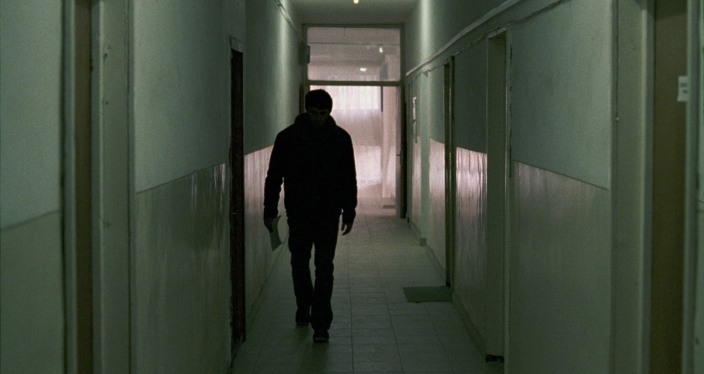
[1] For a cinematographic and semantic comparison, see. Pop, Doru. “The Grammar of the New Romanian Cinema”, Acta Universitatis Sapientiae, Film and Media Studies, 3 (2010), p. 36-37.
[2] The dialogue in the second half of the latter example recalls the munchies-like, pointless-to-our-lives bickerings of people whose on-screen lives we witness in TV shows like "Big Brother”. But in contrast to the practice in Police, in those VTRs with the bickerings, it is known that the active camera and the shooting angle are changed by the cuts, and montage is heavily used.
[3] “Focalization Patterns and Narrative ‘Reality Effects’ in Police, Adjective and Other Films From the Romanian New Wave,” photogénie 2
[4] Kirsten's interpretation, which I find quite reasonable, is based on the follow shots that derive directly from the film's narrative, on the ordinary micro-events with no dramatic effect (such as Cristi drinking soup) and on the long screen time reserved to Cristi's waitings during surveillance.
Translated by Gökçe Yıldız
Published in SEKANS Sinema Kültürü Dergisi, August 2017, Issue e5, pp. 6-13
